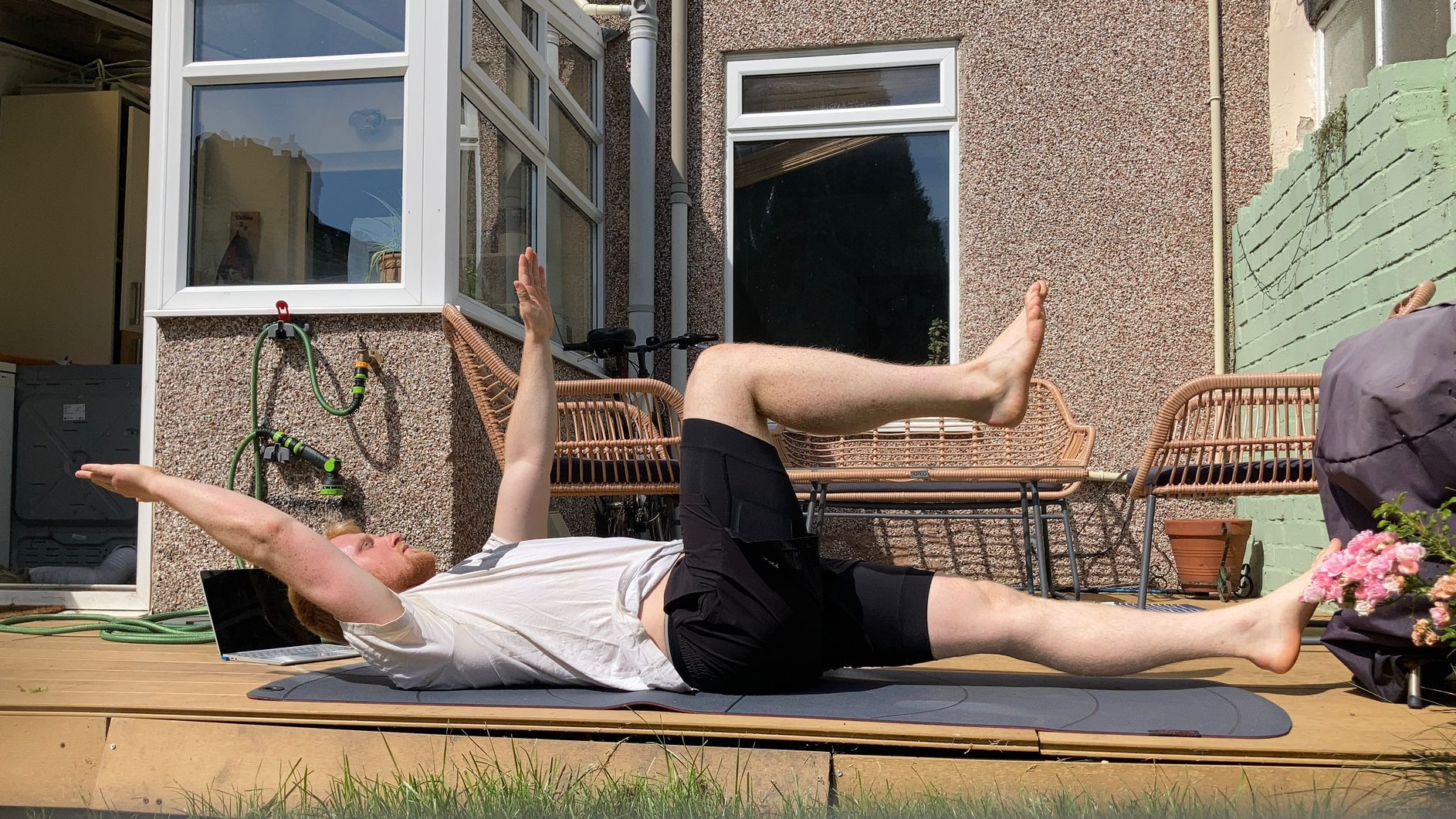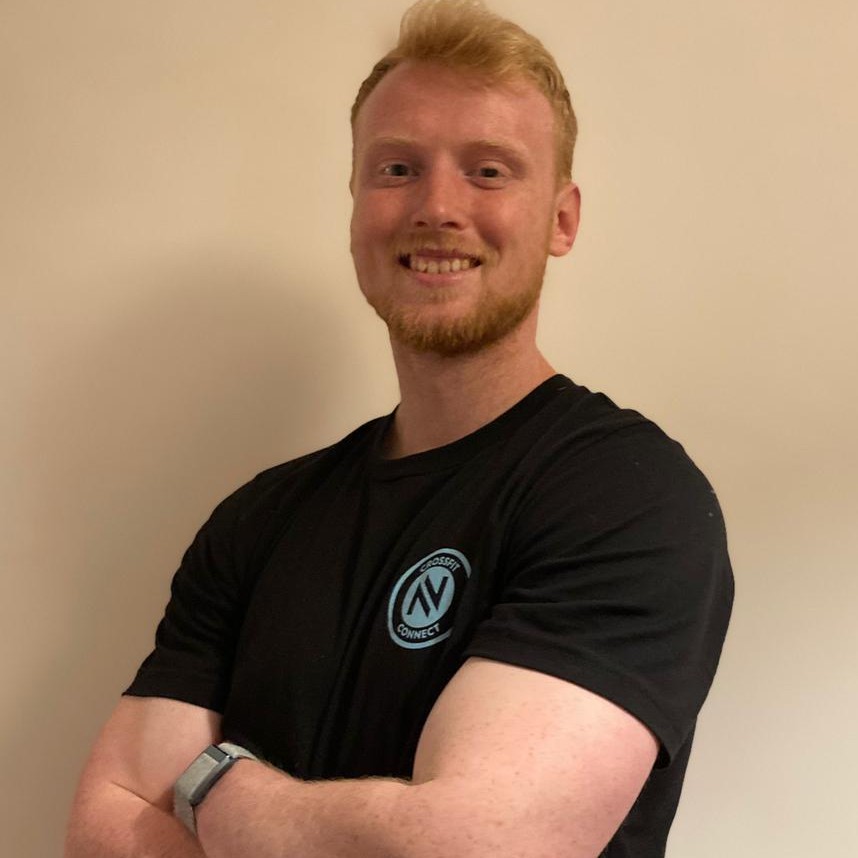I Tried A Pilates Core Routine And The Effects Were Immediate
My abs and glutes were burning, but afterwards I felt great

CrossFit is my preferred way to train. I like lifting heavy weights, learning new gymnastic skills, and challenging myself with intense metcons.
So when the editor of Coach asked me to try a Pilates for core session, I was excited because this isn’t something I usually make enough time for.
I signed up for a 30-minute core-focused routine with instructor Louise Buttler, founder and director of Pilates platform LIVE BRAVE, and it was a fantastic supplement to my regular strength training and conditioning workouts.
Six Things I Learned From This Pilates Core Workout
1. The Effects Were Immediate
“The great thing about Pilates is that you will start to feel and see a difference pretty quickly if you stay consistent with your practice,” Buttler tells me. “Even 10 minutes a day, five days a week, can make a real difference.”
As with anything promising instant results, I was dubious. However, my joints (and my niggly left knee in particular) felt noticeably stronger after just one session, giving me more confidence for movements like lunges and pistol squats.
2. Form Is King
I was impressed with Buttler’s attention to detail and focus on form from the off, with extensive and practical instructions during the workout.
“Eyeline directly up to the ceiling, open collarbones, arms down by your sides, all 10 fingers spread, neutral pelvis, hip bones level, bellybutton and pubic bone level, arch in your lower back, femur bones tracking out from your pelvis to your knees, and your lower legs dropping down to your feet with all 10 toes in the mat.”
Get the Coach Newsletter
Sign up for workout ideas, training advice, reviews of the latest gear and more.
As the routine progressed, I found the slightest alteration in my position based on Buttler’s cues made a big difference to which muscles were active. Through this, I learned to focus on the quality and precision of my movements, making for a more effective workout.
3. You Don’t Need Weights To Feel The Burn
The first sequence involved a descending ladder of 10, eight, six, four and then two glute bridge pulses with no rest. After each set, I was challenged to perform the same number of reps of a new move—allowing my knees to fall to the sides, then bringing them back together—while I held the final glute bridge.
With my glutes and hamstrings under unrelenting tension, a burn akin to that caused by a lengthy wall sit or high-volume set of squats began to creep in.
4. Pilates Works Your Deep Core
It’s easy to confuse a core workout with a couple of sets of sit-ups that leaves you with an aching rectus abdominis—the muscles at the front of your stomach responsible for the six-pack shape.
But moves like dead bugs, the Pilates 100 and dynamic side plank variations, twinned with detailed technique tips from Buttler, activated a selection of mid-body muscles that are often overlooked.
“Pilates is all about the core and developing those deep abdominal muscles,” Buttler tells me. “The most important thing to be aware of is how and when to engage those muscles, and this is all dependent on having a teacher that will cue you correctly, making sure your movement is as effective as possible.”
5. It’s Worth Slowing Down
A large chunk of the CrossFit workouts I tackle are performed against the clock. Here, though, Buttler used slow, controlled and purposeful movements throughout her routine.
This approach increased the amount of time the muscles spent under tension. Thanks to the range of movements, more core muscles were worked than the average abs workout, so it felt like my midsection had been hit from all angles rather than the usual front-focused burn.
6. Pilates Has Multiple Strings To Its Bow
I dived into this routine looking to build core strength. But some of my favorite parts were the stretching elements like the child’s pose and the mermaid exercise.
Afterwards, my muscles certainly felt worked, but they also felt soothed after heavy power cleans the day before.
What is Pilates?
Pilates was invented (and creatively named) by German trainer Josef Pilates in the 1920s.
“Pilates is a low-impact form of exercise that strengthens and conditions the whole body,” says Buttler. “Unlike yoga, it is about strength rather than flexibility, although it does help mobilize the joints. It’s an amazing way to stay fit, healthy and injury-free throughout life.”
What are the benefits of Pilates?
Pilates focuses on the connection between mind, body and breath, and regular sessions can have a positive effect on all three.
“The benefits of Pilates are numerous,” says Buttler. “Pilates elongates, mobilizes and strengthens muscles across the whole body. It’s an efficient way to stay strong throughout life and is accessible for everyone.
“It’s my favorite type of exercise, targeting all the little, often neglected muscle groups to guarantee that the joints are supported correctly. Plus, the focus on breathwork really helps center me mentally and focus my mind for whatever the day might bring.”
As this routine made clear, Pilates is also a great way to strengthen your core muscles.
“A strong core will mean a strong lower back, which is fundamental when we spend so many hours of the day sitting,” says Buttler.
“Lower-back pain is definitely one of the most common complaints I see from clients, and my advice would always be to strengthen the core and increase spine mobility. In this class we go through rolling bridges which help with spine mobility and side planks, which are great for strengthening the obliques, and we target all the muscle groups for a strong core.”
How To Add Pilates Into Your Training
Pilates is effective enough to be your primary exercise but, for me, it was a great way to supplement my other training.
“Pilates is the perfect cross-training for sport because the movements will help strengthen all muscle groups and improve performance,” says Buttler. “Pilates is almost like doing physiotherapy and athletes will notice a cross-over between physio moves and Pilates moves.
“Plus, you can be extremely targeted with Pilates, allowing you to focus on one particular area. If you’re a tennis player it’ll help the shoulder girdle and general rotation will improve your serve. Football players will improve their hamstring and glute strength, which will improve power and explosive movement.
“There’s a reason so many professional athletes use it in their training plans, Cristiano Ronaldo and LeBron James being just two.”

Harry covers news, reviews and features for Coach, Fit&Well and Live Science. With over a decade of training experience, he has tried everything from powerlifting to gymnastics, cardio to CrossFit, all in a bid to find fun ways of building a healthy, functional body.
